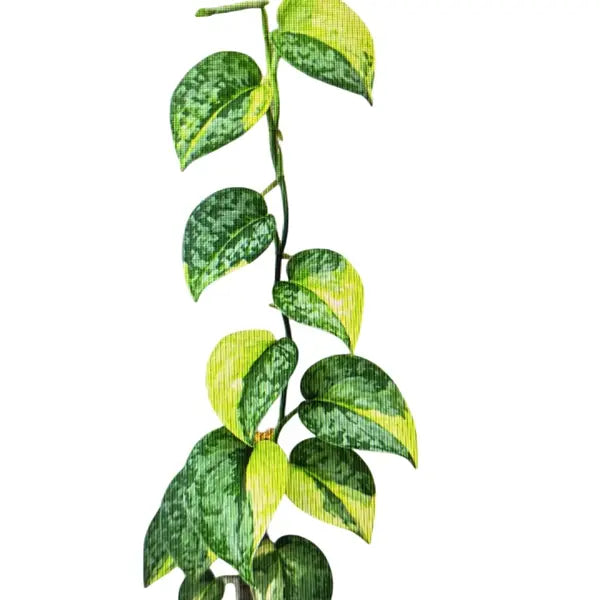
Scindapsus Geulis Variegated - Rare
Selling Size : Single Plant | Pot Included | Secure Packing | Free Shipping
Scindapsus 'Geulis Variegated' is a rare and beautiful cultivar prized for its striking variegated foliage—often marbled with creamy white, mint, and green patterns. It’s a relatively easy plant to care for, especially if you’re familiar with other Scindapsus or pothos types.
Here is a care guide for the Scindapsis Geulis Variegated :
Light and Temperature
Light: This plant thrives in bright, indirect light. While it can tolerate lower light conditions, insufficient light may cause the variegation to fade. Avoid direct sunlight, as it can scorch the leaves. An east or north-facing window is often a good spot.
Temperature: Maintain a temperature range of 65-85°F (18-29°C). Avoid exposing the plant to temperatures below 60°F or to drafts from air conditioners or heaters.
Watering and Humidity
Watering: Water the plant thoroughly when the top 2-3 inches of soil are dry. It's important to allow the soil to dry out between waterings to prevent root rot. Signs of overwatering include yellowing leaves and soggy soil, while curling or drooping leaves can indicate the plant is thirsty.
Humidity: As a tropical plant, it prefers high humidity (50-70%), but it can adapt to normal household humidity levels. To increase humidity, you can use a humidifier, place the pot on a pebble tray filled with water, or group it with other plants.
Soil and Fertilizer
Soil: Use a well-draining, aerated potting mix. A good mix can be made from peat moss or coco coir for moisture retention, and perlite or sand for drainage.
Fertilizer: During the growing season (spring and summer), feed the plant every 4-6 weeks with a balanced liquid fertilizer diluted to half strength. Reduce or stop fertilizing in the fall and winter when the plant's growth slows.
Other Care Tips
Repotting: Repot the plant every 1-2 years or when you see roots growing out of the drainage holes.
Pruning: You can prune your plant regularly to encourage a bushier growth habit. The plant can also be trained to climb on a moss pole or trellis.
Pests: Keep an eye out for common houseplant pests like spider mites, mealybugs, and scale. You can treat these by wiping the leaves with a damp cloth, neem oil, or insecticidal soap.
Toxicity: This plant is toxic if ingested and can cause mouth irritation. It's best to keep it out of reach of small children and pets.

